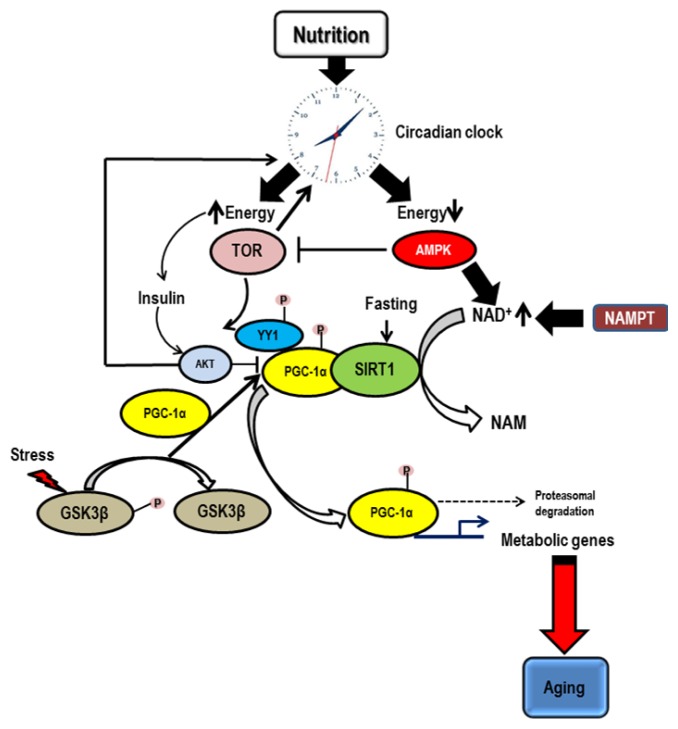Figure 3.
Regulation of PGC-1α—this schematic represents the relationship between nutrition, circadian clock and other regulatory factors involved in post-translational modification of PGC-1α and its consequent impact on metabolic genes and aging. Nutritional availability impacts the circadian clock - when energy is replete, TOR results in transcriptional regulation of PGC-1α through transcription factor YY1 (see text for details). The serine threonine kinase AKT (a key component of insulin signaling pathway) has an inhibitory effect (negative regulator) on PGC-1α. In energy deficient situations, AMPK has an inhibitory effect on TOR thus inducing PGC-1α and increased mitochondrial biogenesis. SIRT1 has a stimulatory deacetylation effect on PGC-1α under conditions of fasting and oxidative stress and helps accumulate it in the nucleus. Both TOR and AKT feed-back on the circadian clock and regulate it as a pacemaker. The nutrient sensitive kinase GSK3β targets PGC-1α for proteasomal mediated degradation and is a function of oxidative stress response. PGC-1α by its transcriptional activity plays an important role in the expression and activity of many metabolic genes which impact longevity.

